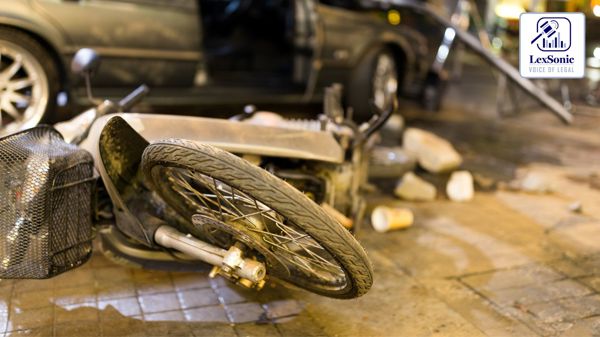Rash Driving Leading to Tragedy: Court Upholds Conviction in Fatal Accident Case.
25 November 2024
Motor Accident >> Family Law
In a significant case of Arunkumar Udayraj Singh v/s The State of Maharashtra & Another, concerning rash driving and its severe consequences, the Bombay High Court has upheld the conviction of an individual responsible for causing a tragic accident in 1997, which resulted in the loss of six lives, including two children. The Court affirmed the concurrent judgments of both the trial and appellate courts, convicting the accused under multiple sections of the Indian Penal Code (IPC), including Sections 279 (rash driving), 337 (causing hurt by rash or negligent driving), 338 (causing grievous hurt), and 304A (causing death by negligence).
The Tragic Incident:
The incident occurred on the early morning of September 1, 1997, at around 4:30 a.m., when the applicant, driving a goods-carrying tempo, lost control while overtaking another vehicle from the wrong side. The reckless maneuver led to the tempo running over a group of people who were sleeping on the roadside in front of their hutments. The resulting accident caused the death of six individuals, including two children, and left seven others grievously injured.
The prosecution's case was primarily built on the testimony of the key eyewitness, Mr. Mahendra Balu Zimur (PW-1), who was sitting outside his hutment when the accident occurred. PW-1, a vegetable vendor, testified that the tempo attempted to overtake another vehicle from the left side but failed to clear the other vehicle and collided with him before running over the sleeping victims. The tempo continued its trajectory for another 80-100 meters, knocking down several individuals and damaging nearby hutments.

The Legal Proceedings:
The case was brought to trial after the police registered an offence against the applicant based on the initial investigation. The prosecution presented eight witnesses, including injured victims, and produced crucial evidence such as the accident report, injury certificates, and post-mortem notes of the deceased victims. The prosecution also provided corroborative evidence, including the spot panchanama and photographs depicting the severity of the incident.
Despite attempts by the defense to argue contributory negligence on the part of the victims—who were reportedly sleeping on the road during the monsoon season—the Court dismissed this line of argument. The Court emphasized that while the act of the victims sleeping on the road may have contributed to the circumstances, it was the applicant's rash and negligent driving that was the primary cause of the tragedy. The defense's contention was further weakened by the fact that the tempo was found 80-100 meters away from the site where it first collided with PW-1, suggesting the reckless nature of the driving.
The Court's Reasoning:
The Bombay High Court meticulously reviewed the evidence on record, including the testimony of PW-1, the sole eye-witness and the first victim to be hit by the tempo. The Court emphasized that the testimony of PW-1 was consistent, clear, and convincing, corroborated by the spot panchanama, the site map, and the testimony of other injured victims. The severity of the accident, with the tempo traveling a considerable distance after hitting PW-1 and the destruction caused, was deemed to be a direct consequence of the applicant's rash driving and failure to exercise due caution while overtaking another vehicle from the wrong side.
The Court also rejected the defense's argument that the road was dark at the time of the accident, pointing to the spot panchanama, which indicated sufficient lighting from street lamps. Furthermore, the Court dismissed the notion of contributory negligence by the victims, asserting that no driver should be given a license to drive recklessly, regardless of the circumstances of the victims.
The applicant’s attempt to downplay the severity of the accident by citing the Rules of the Road Regulation was also found unconvincing. The Court noted that overtaking from the left-hand side in such conditions was prohibited and further proved that the applicant’s actions directly led to the accident and the subsequent deaths.
Court's Final Judgment:
In conclusion, the Court held that the applicant’s conviction was well-founded based on the overwhelming evidence and his reckless actions. Both the trial court and the appellate court had arrived at correct conclusions, and the judgment was upheld. The applicant’s bail bond was canceled, and he was ordered to surrender and undergo the remainder of his sentence.
The Court also acknowledged the efforts of the legal aid advocate representing the applicant, who had provided valuable assistance during the proceedings.
Conclusion:
This case serves as a stark reminder of the dangers of rash and negligent driving, especially when combined with the failure to observe basic traffic rules. The judgment reinforces the principle that accountability for such tragedies must be firmly established to ensure justice for the victims and their families. The Bombay High Court's decision emphasizes the need for drivers to exercise caution and responsibility, as the consequences of a moment’s recklessness can be catastrophic.
Section 279., Indian Penal Code - 1860
Section 337., Indian Penal Code - 1860
Section 338., Indian Penal Code - 1860
